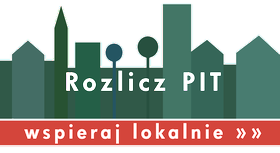Miasto i Gmina Gniew
Menu witryny
Treść strony
Gniew under occupation
The Napoleonic wars were the hope of return to Poland. In the years of 1806–1807 Gdansk Pomerania became the land for the activities of Polish army. After the wounds in Tczew, the general Jan Henryk Dąbrowski has stayed in Gniew for four months. After the fall of Napoleon, the Prussians strengthened their rule in Pomerania and joined the implementation of social and economic changes.
In 1822, as a result of the regulatory activities of the Vistula, its flow has been moved away from the city, what saved the castle hill from washing. In the years of 1824–1830 the road was built from Królewiec through Gniew, Bydgoszcz to Berlin, what has had a positive impact on the development of the city.
A few industrial plants were created in the XIX century – the agricultural machinery factory, sawmill, sugar mill, carriage factory. Echoes of the Spring of Nations incoming to Gniew caused the revival of patriotic sentiment. This has resulted in the creation of the Polish Kwidzyn and Gniew League in 1848.
Father Theodor Franzky was the patron of the Polish national movement in Gniew. Residents of Gniew actively engaged in providing support for the participants of the January Uprising, organising aid activities, masses, manifestations and the clandestine recruitment of volunteers.
In 1907, at the initiative of Paweł Tollik and Jan Klein, the People’s Bank was formed in Gniew. Also father Benon Kursikowski had a significant impact on the socio-religious development. He has renovated the church, cemetery chapel, he has built a rectory, he acted in the lending company, as well as for the national revitalisation.
At the beginning of the XX century, Gniew received a railway connection with the line Bydgoszcz-Królewiec and the narrow-railway line from Kwidzyn to Wielki Walichnów and then to Pelplin.
The outbreak of World War I and the subsequent defeat of Germany caused the increase of the national mood. The County People’s Council has been established in Gniew, led by father Antoni Wolszlegier, and the People’s Guard, led by lieutenant Joseph Głowacki. The Gniew area, located under the management of the People’s Council and the People’s Guard, was called the “Gniew Republic”. Under the decisions made in Versailles on January 27, 1920, Gniew was incorporated to Poland. The first commissioner governor was Franciszek Czarnowski from Gniew Mills.
Na początku XX wieku Gniew otrzymał połączenie kolejowe z linią Bydgoszcz-Królewiec oraz linię kolejową wąskotorową z Kwidzyna do Wielkich Walichnów i dalej do Pelplina.
Wybuch I wojny światowej i późniejsza klęska Niemiec spowodowały wzrost nastrojów narodowych. W Gniewie powstała Powiatowa Rada Ludowa, kierowana przez księdza Antoniego Wolszlegra oraz Straż Ludowa, dowodzona przez porucznika Józefa Głowackiego.
Obszar ziemi gniewskiej, znajdujący się pod zarządem Rady Ludowej i oddziału Straży Ludowej, nazwano „Republiką Gniewską”. Na mocy decyzji podjętych w Wersalu 27 stycznia 1920 r., Gniew został włączony do Polski. Pierwszym komisarycznym starostą został Franciszek Czarnowski z Gniewskich Młynów.
Polecamy
Dofinansowanie
Strona sfinansowana została ze środków Ministerstwa Administracji i Cyfryzacji, w ramach konkursu na budowę strony internetowej oraz dostosowanie jej do potrzeb osób niepełnosprawnych.
Kontakt

Urząd Miasta i Gminy Gniew
Plac Grunwaldzki 1, 83-140 Gniew
pon., wt., czw. 7.30-15.30
śr. 7.30-17.00
pt. 7.30-14.00
tel. 58 530 79 19;
fax 58 530 79 40
e-mail: sekretariat@gniew.pl
DANE DO FAKTURY
Gmina Gniew
NIP 593 10 05 516
REGON 191675296
Adres Elektronicznej Skrzynki Podawczej: /34gu04waml/skrytka





























